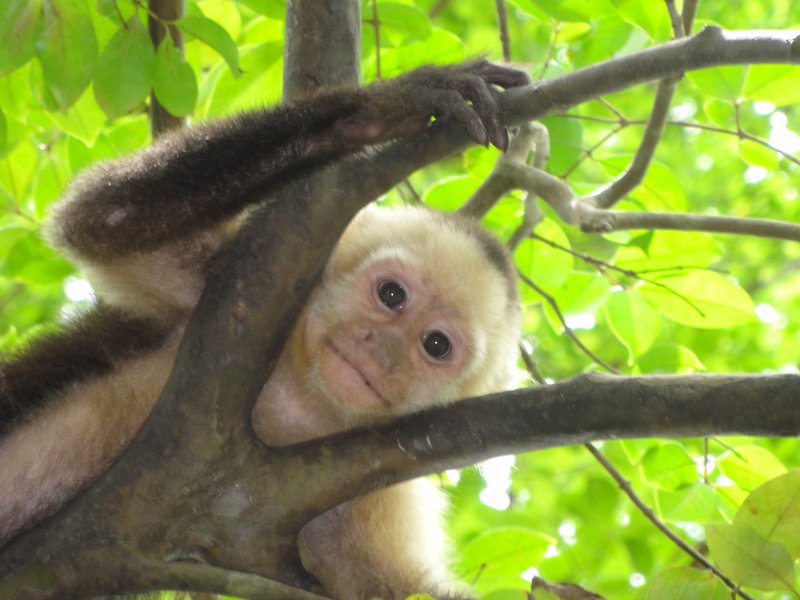
So, let’s take a step back and chat about what makes these little guys tick. Imagine a kid in a candy store; they’re excited, curious, and maybe a bit unpredictable. That’s similar to the Capuchin monkey’s mindset. They’re highly intelligent and social, which is why they can sometimes get themselves—and others—into trouble. In this article, we’ll dive into their behavior, potential dangers, and how to safely enjoy them from a distance.
Understanding Capuchin Monkey Behavior
Capuchin monkeys are known for their cleverness. They can use tools, solve problems, and even communicate in complex ways. This intelligence makes them fascinating, but it also means they can be more unpredictable than your average animal. In the wild, they live in social groups where they exhibit a range of behaviors, some of which can be aggressive.
Social dynamics play a big role in how Capuchin monkeys interact with each other and, sometimes, with humans. Within their groups, they establish hierarchies, and when they feel threatened or challenged, they can display aggressive responses. Picture a group of classmates: if someone feels their position is at risk, they might react defensively. The same goes for Capuchins.
Moreover, Capuchin monkeys can become *territorial*. This means that if they think you’re invading their space—whether in their habitat or a pet store—they may act out. It’s essential to maintain a safe distance and avoid provoking them in their natural environment.
Potential Dangers of Capuchin Monkeys to Humans
Now, let’s get to the heart of the matter: can Capuchin monkeys actually be dangerous to humans? The answer isn’t black and white. While many encounters are harmless, there are instances where they can behave aggressively.
For one, their bite can be quite painful. A Capuchin’s jaw is strong for their size, and a quick nip can lead to injuries. Imagine trying to play with a hyper dog who suddenly decides to bite your hand—surprising and painful! Additionally, Capuchins can carry zoonotic diseases, which are diseases that can be transmitted from animals to humans. This risk is heightened in situations where they are kept as pets or in captivity, where human interaction can lead to stress for the animal and unpredictable behavior.
In rare cases, when they feel cornered, Capuchins may attack. This can especially happen if someone tries to feed them or get too close. Just like a squirrel might react aggressively if it feels threatened, Capuchins can do the same. Thus, caution is paramount when encountering them.
How to Safely Interact with Capuchin Monkeys
If you’re ever lucky enough to encounter a Capuchin monkey, or if you’re considering them as pets, it’s important to know how to interact safely. Here’s what to keep in mind:
- Keep your distance: Enjoy watching them from afar. Use binoculars or a camera lens to observe their behavior without getting too close.
- Avoid feeding them: While it might be tempting to share a snack, feeding wild animals can lead to aggressive behavior and dependency on humans for food.
- Respect their space: If you see them in a zoo or sanctuary, give them room to move around without feeling threatened.
- Understand their body language: Signs of stress or irritation can include vocalizations, tail flicking, or showing teeth. If you see these signs, it’s best to back off.
By following these guidelines, you can enjoy their fascinating behavior without putting yourself or the monkeys at risk.
The Ethics of Keeping Capuchin Monkeys as Pets
You might be surprised to know that keeping Capuchin monkeys as pets is a mixed bag. On one hand, they can be affectionate and playful companions; on the other hand, their wild instincts can pose significant challenges.
First off, let’s talk about the commitment. Capuchins can live for over 40 years in captivity. Owning one is similar to adopting a long-term pet, like a dog or cat, but with the added complexity of their wild nature. You’ll need to provide a stimulating environment, proper nutrition, and social interaction—much like a toddler.
Moreover, their social needs are immense. Capuchins are happiest in groups, so having just one can lead to loneliness and behavioral issues. Plus, if you decide to bring one into your home, it’s crucial to make sure it was ethically sourced. Supporting illegal wildlife trade can have devastating impacts on both the animals and the ecosystem.
For many people, the drawbacks outweigh the benefits. Honestly, it’s often best to appreciate these monkeys from a distance.
Capuchins in the Wild vs. Capuchins in Captivity
The lives of Capuchins in the wild vastly differ from those in captivity. In the wild, they navigate complex social structures, spend their days foraging for food, and display natural behaviors essential for their survival. They thrive amongst their peers, learning from each other, and developing their skills.
On the flip side, Capuchins in captivity often face challenges. Even in well-meaning sanctuaries, they might miss out on the full range of experiences their wild counterparts enjoy. For example, the lack of natural foraging behaviors can lead to boredom, stress, and even health issues.
While they can adapt to life in captivity, doing so can lead to increased risk of aggressive behavior due to frustration and stress. Think of it like a child stuck indoors on a beautiful day; without the freedom to roam and explore, they might get cranky.
Thus, if you want to learn more about Capuchins or see them in action, consider visiting a reputable sanctuary or national park. This way, you can enjoy their beauty without causing distress to the animals.
Capuchin monkeys are undeniably fascinating creatures. While they can be charming and playful, it’s crucial to remember that they also have the potential to be dangerous to humans if not treated with respect. Their intelligence and social nature can lead to unpredictable behaviors, especially when they feel threatened or cornered.
By understanding their behavior and knowing how to interact with them safely, you can enjoy the wonder of these little monkeys without putting yourself or the animals at risk. Whether you see them in the wild or in a sanctuary, appreciating Capuchin monkeys from a distance is always the best policy.

